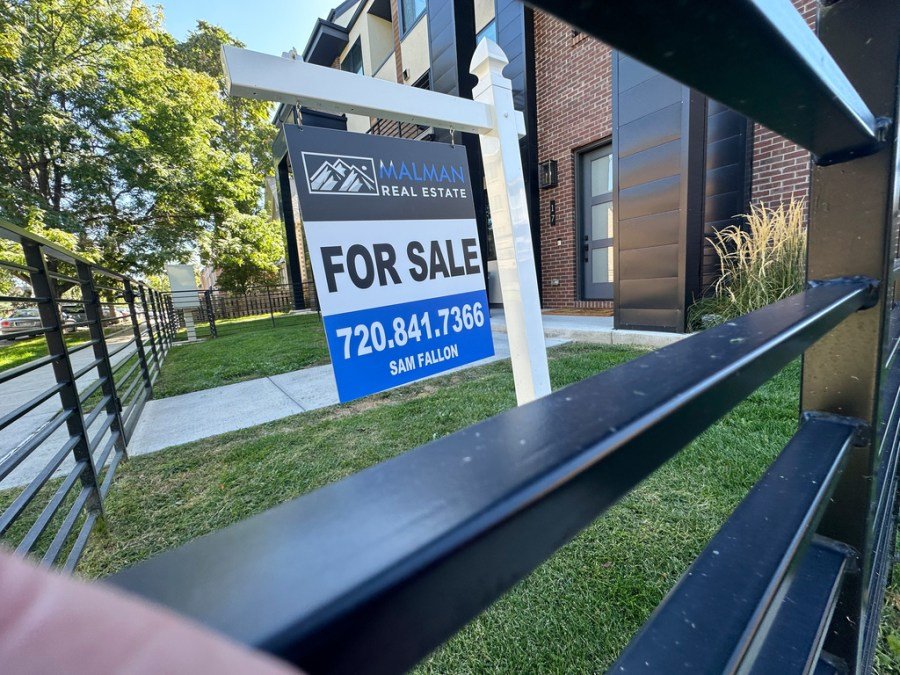
The government shutdown has entered uncharted waters — it is now the longest full shutdown in American history. And we are hearing firsthand that the impact on the housing sector is dire and growing worse by the day.
In rural Oklahoma, Realtor Christina shared what she’s seeing. “Roughly 80 percent of our home loans are USDA or HUD-184 programs,” she said. “We’re already feeling the impact. We had two closings scheduled for Friday, but beyond that, our pipeline has essentially stalled until the government reopens and approvals resume.”
That means nearly every aspect of her business is frozen. “Our phones have gone quiet,” she said. “Offers aren’t being made or accepted, and showings have slowed significantly. We have one triple closing completely held up waiting on a USDA buyer, and we’re now over a month into extensions. Each of these buyers has already invested thousands into earnest money, appraisals, inspections and title work, and we’re doing everything we can to keep sellers from walking away.”
Her story captures what small-town real estate professionals across the country are facing. For many buyers, this home is their chance at stability and generational wealth. Each day the shutdown continues pushes that dream further out of reach.
The USDA and HUD-184 programs Christina referenced are designed precisely for the communities that can least afford a disruption. USDA loans serve low- to moderate-income families in rural America, while HUD-184 loans provide financing for Native American borrowers who often face limited mortgage options. Loan endorsements are also backing up at the Federal Housing Administration and Department of Veterans Affairs. Together, these programs represent a lifeline for millions of Americans.
Now, with these rural and tribal mortgage programs frozen, transactions are stalled indefinitely. Appraisals expire, rate locks lapse and approvals vanish. For families living paycheck to paycheck, there’s no cushion to start over. Sellers, unsure when they’ll ever close, are walking away from deals and relisting their homes — often at higher prices.
Her experience illustrates a reality often lost in the headlines: for many homebuyers and sellers, the damage from a federal shutdown is already here. What Washington policymakers call a “temporary funding lapse” is, in practice, a permanent setback for families who have saved, planned and dreamed of homeownership.
The effects are cascading through local economies. Each delayed closing hurts an entire network of professionals — appraisers, inspectors, contractors, lenders, and title companies — and drains momentum from small towns and city neighborhoods alike.
The real estate sector accounts for nearly one-fifth of the entire U.S. economy, with each home sale generating more than $125,000 in local economic activity and supporting two jobs. When transactions stall, that economic engine grinds to a halt.
It’s not just the loan programs at risk. Since Oct. 1, the National Flood Insurance Program has been unable to issue new or renewal policies without congressional reauthorization. That leaves homebuyers in flood-prone areas exposed without coverage for a hazard that can cause $25,000 in damage from just one inch of flooding.
NAR research, based on a 60-day lapse in National Flood Insurance Program authority in 2010, found that up to 40,000 home sales per month were affected, putting roughly $7 billion in real estate transactions at risk.
And that’s just the short-term impact. While existing National Flood Insurance Program policies remain active and transferable, with a 30-day grace period for renewal, uncertainty grows the longer the lapse continues. If the shutdown persists, many policies issued in October could begin to expire, leaving not only buyers but also current owners in high-risk areas at the height of hurricane season without protection when it’s needed most.
If the shutdown extends beyond 30 days, impacts will deepen dramatically across the board. The last prolonged government shutdown cost the U.S. economy $11 billion, according to the Congressional Budget Office — $3 billion of that was permanently lost. We are once again on the verge of repeating those mistakes. The longer the government remains closed, the greater the risk to market stability, affordability and public confidence in housing.
Real estate doesn’t stop when Washington does. Buyers and sellers continue to make plans, invest in their communities, and pursue opportunity. They deserve a government that keeps pace.
The National Association of Realtors urges Congress to come together and pass the clean, bipartisan continuing resolution or a long-term funding package to restore stability to the housing market and the broader economy.
The shutdown may be centered in Washington, but its costs are being paid in every community across America — in lost sales, stalled loans and quiet phones in places like Christina’s Oklahoma hometown. Every day that passes without action chips away at the foundation of the American Dream.
Shannon McGahn is Executive Vice President and Chief Advocacy Officer of the National Association of Realtors.


